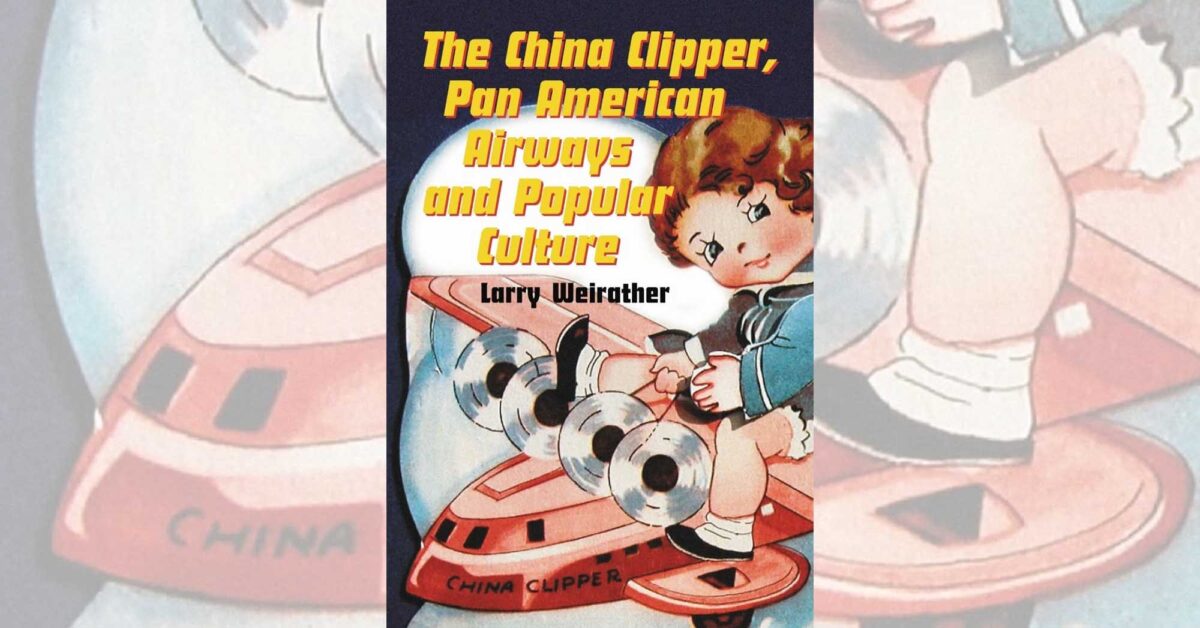The China Clipper, Pan American Airways and Popular Culture
by Larry Weirather, McFarland, Jefferson, N.C., 2007, $35.
Aviation historians remember Pan American World Airways as “the chosen instrument” of the U.S. government because it represented American interests, values and beliefs as it pioneered air routes over mountains, across oceans and around the world. During the 1930s and ’40s, it was the only commercial airline that was authorized to bear the American flag to other nations as it carried the rich and famous in comfort and speed over unprecedented distances in flying boats called Clippers.
The aircraft themselves truly captured the public imagination at a time when some counteraction to World War I and the Great Depression that followed was desperately needed. As Larry Weirather points out, “Though no Clippers survive today, they continue to fly on in contemporary popular culture.” The proof of the extent of public infatuation with the Clippers ranges from motion pictures, music, toys, comics, games and automobiles to books, pulp fiction, agriculture, poetry, clothing, advertising, stamps and nose art.
Weirather’s work is more than a collection of stories about how Pan Am symbolized the changing needs and beliefs of the United States through its aircraft. It shows how the airline used Martin, Boeing and Sikorsky flying boats to help influence the course of World War II through their capability to fly cargo, mail and passengers nonstop over great distances. In the chapter titled “The Clipper as Military Icon,” we are reminded that aircraft were used to assist the war effort in other ways. For example, Pan Am, Eastman Kodak and Imperial Airways of Great Britain formed a company to develop Airgraphs, which led to V-Mail. When it did not catch on at first, Pan Am Clippers were used in advertising to show how easy and fast letters could be exchanged by servicemen and their families.
The Clippers were also involved with codes and espionage in the Pacific and had a role in breaking up spy rings in the Atlantic. This involvement continued in films like Raiders of the Lost Ark and The Case of the Pacific Clipper. They also played active roles in real-life dramas in Cuba in 1933 and acted as flying observation posts when Pan Am established advance bases along the Pacific routes to the Far East and in China with its subsidiary, the National Aviation Corporation.
In the chapter on “Clipper Heroes and Celebs,” Weirather briefly reviews Juan Trippe’s life and his direction of the airline’s growth, then covers some of the people who helped influence its image: chief pilot Captain Ed Musick; navigator Fred Noonan; first ladies Lou Henry Hoover and Eleanor Roosevelt; first flighter Clara Adams; movie stars Charlie Chaplain, Clark Gable and Errol Flynn; writer Ernest Hemingway; and Prime Minister Winston Churchill. The clandestine roles of “shadow heroes” like former Pan Am pilots George A. Doole and James W. Walker Jr., who rose through Pan Am’s ranks, are also explored.
This detailed examination of the past and present influence of Pan Am’s Clippers goes far beyond a recitation of the company’s history. There is much here to surprise readers who want to know more about these fascinating aircraft—although they and the company are long gone.
Originally published in the September 2007 issue of Aviation History. To subscribe, click here.





